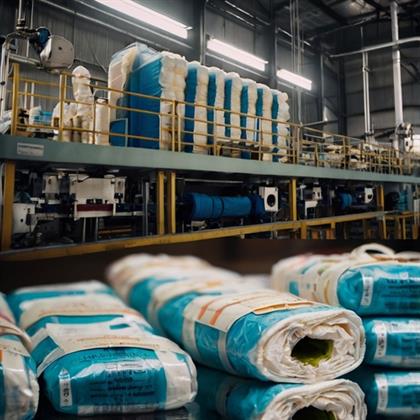
Data Fabric Market Opportunities 2024-2031: Strategic Innovations and Growth Potential
May 29, 2024
The data fabric market opportunities from 2024 to 2031 are poised to redefine the landscape of data management. With the increasing complexity of data environments and the need for real-time analytics, data fabric technology offers a unified approach to data integration and management. This article explores the strategic opportunities within the data fabric market, highlighting the potential for innovation and growth across various sectors.

What is Data Fabric?
Data fabric is a comprehensive data management architecture that integrates and orchestrates data from diverse sources, including on-premises, cloud, and hybrid environments. It provides a consistent framework for data services, enabling organizations to break down data silos, enhance data accessibility, and facilitate real-time analytics.
Key Opportunities in the Data Fabric Market
Cloud and Hybrid Deployments: As businesses continue to migrate to cloud platforms, the need for data fabric solutions that can seamlessly integrate on-premises and cloud data is growing. Hybrid deployments offer the flexibility and scalability needed to manage complex data environments, presenting a significant opportunity for data fabric providers.
AI and ML Enhancements: The integration of artificial intelligence (AI) and machine learning (ML) into data fabric solutions can revolutionize data analytics. Predictive analytics, automated data processing, and intelligent data integration are some of the advanced functionalities that AI and ML can bring to data fabric, opening up new opportunities for innovation.
Edge Computing: The rise of edge computing offers a new dimension for data fabric technology. By processing data closer to its source, edge computing reduces latency and improves real-time analytics. Data fabric solutions that support edge computing can enhance operational efficiency and decision-making in industries such as manufacturing, healthcare, and telecommunications.
Regulatory Compliance and Data Governance: Increasing data protection regulations present opportunities for data fabric solutions that offer robust data governance and security features. Organizations need to comply with regulatory standards while managing and protecting sensitive data, making data fabric technology an essential tool for achieving these goals.
Industry-specific Applications: Different industries have unique data management needs, and data fabric solutions can be tailored to address these specific requirements. For example, the healthcare sector requires seamless integration and management of patient data, while the financial industry demands real-time analytics and stringent security measures. Developing industry-specific solutions can open up niche markets and provide customized value propositions.
Market Segmentation
The data fabric market can be segmented based on deployment model, organization size, industry vertical, and geographical region:
Deployment Model: Data fabric solutions are available in on-premises, cloud-based, and hybrid models. Hybrid models are expected to gain significant traction due to their flexibility.
Organization Size: Both large enterprises and small to medium-sized businesses (SMBs) are adopting data fabric solutions. Large enterprises typically lead the adoption curve.
Industry Verticals: Key industries adopting data fabric solutions include healthcare, finance, retail, manufacturing, and telecommunications, each with unique data management needs.
Geographical Regions: North America currently dominates the market, but the Asia-Pacific region is anticipated to experience the highest growth rate due to rapid digital transformation and increased IT investments.
Competitive Landscape
The competitive landscape of the data fabric market is characterized by intense competition among key players. Major companies such as IBM Corporation, Oracle Corporation, SAP SE, Informatica, and Talend are heavily investing in research and development to enhance their product offerings. Strategic partnerships, mergers, and acquisitions are common strategies employed to expand market presence and leverage technological advancements.
Challenges and Opportunities
While the data fabric market presents numerous opportunities, it also faces several challenges:
Integration Complexity: Integrating diverse data sources and ensuring seamless interoperability can be complex and resource-intensive. Organizations need skilled personnel and advanced technologies to manage this complexity effectively.
Data Security Concerns: Handling large volumes of sensitive data necessitates robust security measures. Ensuring data protection and compliance with regulations is critical to mitigate security risks.
Despite these challenges, the market offers significant opportunities for innovation and growth:
Enhanced Capabilities through AI and ML: The integration of AI and ML can improve data fabric capabilities, enabling predictive analytics and automated data management.
Edge Computing: The increasing focus on edge computing presents new opportunities for data fabric solutions to manage and process data closer to its source, reducing latency and improving real-time analytics.
Future Outlook
The future outlook for the data fabric market is highly positive. Continued advancements in AI, ML, and edge computing will drive the evolution of data fabric solutions, offering enhanced capabilities and new functionalities. As cloud adoption rises, the demand for data fabric solutions that can integrate and manage cloud data will grow. Moreover, the need for robust data governance frameworks will become more critical as organizations seek to manage data quality, compliance, and security effectively.
FOr more info: https://www.gmiresearch.com/report/data-fabric-market-analysis-industry-research/
Conclusion
The data fabric market opportunities from 2024 to 2031 highlight a period of significant growth and innovation. By leveraging data fabric technology, organizations can achieve seamless data integration, real-time analytics, and enhanced data security. As technological advancements continue to unfold, the data fabric market will play a crucial role in shaping the future of data management, providing businesses with the tools they need to thrive in a data-centric world.
Leave a Reply
Related Products
You Might Like Also

Forecasting the Future of the Adult Diaper Market 2031
The Adult Diaper Market is set for transformative growth as we approach 2031. With increasing life expectancy and changing societal norms surrounding incontinence Read More

The Future of Advertising: In-Game Advertising Market 2031
The In-Game Advertising Market is on the verge of a transformative era as it continues to gain traction among advertisers looking to connect with consumers in engaging ways Read More

Carbon Black Market Outlook: Growth Prospects and Challenges by 2031
The Carbon Black Market is expected to grow steadily by 2031, spurred by increasing demand from industries like rubber, plastics, and paints. Carbon black Read More

The Energy Harvesting System Market is set to expand significantly by 2031, driven by advancements in technology and the increasing need for sustainable energy solutions Read More

The Future of the Steam Turbine Market by 2031
The Steam Turbine Market is on the cusp of a transformation, influenced by the global energy landscape's evolving demands and technological advancements Read More

The Aquafeed Market is projected to witness robust growth by 2031 as the global aquaculture industry continues to expand Read More











